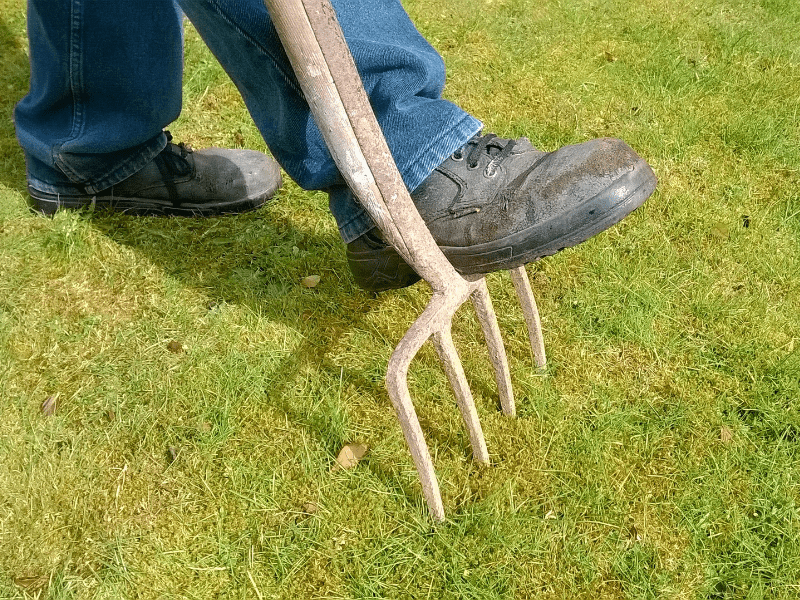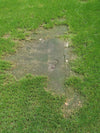
All About Moss
Moss is a common issue in lawns. When conditions are dark and damp, you may notice moss appear around your garden, especially in the autumn and winter months in the UK. In this blog we tell you all about moss, from what it is to how to deal with its appearance on your lawn.
What is moss?
Moss is a type of plant in the Bryophyta family. They are spore-producing, non-vascular plants, meaning that they lack a number of characteristics we are used to seeing in plants, like leaves, branches, and roots. Mosses grow in many different environments and are highly adaptable, meaning that they can easily take hold anywhere with the right conditions, including your lawn!
Is it bad to have moss in your lawn?
Yes, get it out of there! Moss can grow in almost any type of soil and, if left to spread, it can quickly overtake your grass, forming dense, irregular spongy mats. Not only does moss ruin the aesthetic appearance of your lawn, but it also negatively impacts the health of your grass.
Moss suffocates the grass by competing for growing space, and prevents essential water and nutrients from reaching the grass roots by absorbing them on the surface. Additionally, in the dryer months moss will die, leaving behind unsightly bald patches on your lawn.
Why do I have moss in my lawn?
The main cause of a mossy lawn is excess water, as moss is 90% water and thrives in moist environments. Water excess can be due to poor drainage, poor soil quality or high clay content, weak grass roots, and prolonged wet weather periods. Other issues that can encourage moss to take hold in your lawn are shady spots, poor air circulation, poor lawn care and mowing practices, and underlying health conditions that weaken your lawn.
How to get rid of moss in your lawn?
Moss can be controlled through a good lawn care routine alone. Below, we take a look at some of the processes that can help you keep moss at bay, by either removing it or preventing it’s growth.
Scarifying
Scarification is the process of removing thatch, a layer of organic matter that accumulates at the base of your lawn over time. Thatch stores moisture and creates an ideal environment for moss to develop. By regularly scarifying your lawn you’ll remove thatch and moss, and improve aeration and drainage, helping prevent future issues.
Scarification comes with the additional benefit of creating stress on the moss plant, which prevents its development as moss does not like to be disturbed. To learn more about why and how to Scarify your lawn, head over to our blog.
Improving Soil Drainage
Another effective technique to naturally deal with moss is to improve the drainage of your lawn to ensure no excess water is held in the top layer, as this is where the moss grows. Aerating your soil is a good way to ensure that water and air can move at the root level, making your lawn healthy and preventing water logging on the surface. Learn more about the process and benefits of aeration here.
Encouraging Growth
When moss spores reach your lawn, the moss plant has to compete with your grass for space, water, and nutrients. A good strategy for fighting and preventing moss growth is promoting the health and growth of the grass.
Make sure that you mow your lawn regularly and maintain a reasonable length, as a short lawn is more susceptible to moss growth. Additionally, you can encourage healthy lawn growth by ensuring that your grass is properly nourished. The So & Mo Performance Liquid Lawn Feed is delivered as a 12 month plan that works with your lawn through the year, to ensure year round performance.
Using Iron Sulphate
Good lawn care processes, combined with a good feeding programme which includes iron sulphate, like our Winter Feed, can prevent and stunt the growth of moss.
In severe cases, a higher concentration of iron sulphate can be used in the form of a Moss Treatment. The iron sulphate stunts the growth of the moss to allow for easy removal through good scarification or verticutting processes. However, when applied at a high rate, iron sulphate can blacken the moss. So do take into account that by using the technique, the look of your garden may get worse before it gets better.
How to Prevent Moss?
There are over 12000 species of moss and over 700 of those are present in the UK alone, so the chances are that moss spores of some species are eventually going to reach your grass. To prevent moss taking over, it is important to keep your lawn in good health and maintain a good lawn management routine, including regular scarification and aeration.
Reconsider your mowing regime, making sure that you mow regularly and don’t cut your lawn too short. Similarly, ensure to use a good quality fertiliser programme to encourage vigorous grass growth. The So & Mo 12 months Lawn Feed plan works with your lawn throughout the seasons to deliver year round performance, helping your lawn stay healthy and resilient.
Other ways to keep moss at bay is to ensure more light, improve the drainage, and keep traffic on the lawn, as moss does not do well under stress.
Will grass grow back after Moss?
Once the moss has been removed, the space will be free for the healthy grasses to grow into. Regrowth can be encouraged with a good feeding programme.
However, if the moss problem has been quite severe, it is best to overseed, as large bare areas leave the soil prone to new problems, such as weeds. The good news it, that reseeding is the perfect opportunity to create a dense lawn of grasses that will stay healthy and resilient. We recommend using a seed mixture, like the So & Mo Grass Seed mixture.Ready to be proud of your garden?
Ensure your lawn never goes hungry with our personalised feeding plan. Delivered through you letterbox exactly when you need it.





